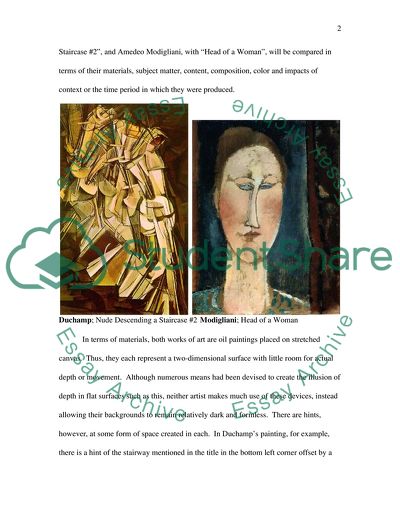Cite this document
(Comparing Duchamp and Modigliani Case Study Example | Topics and Well Written Essays - 2000 words, n.d.)
Comparing Duchamp and Modigliani Case Study Example | Topics and Well Written Essays - 2000 words. https://studentshare.org/visual-arts-film-studies/1541599-art
Comparing Duchamp and Modigliani Case Study Example | Topics and Well Written Essays - 2000 words. https://studentshare.org/visual-arts-film-studies/1541599-art
(Comparing Duchamp and Modigliani Case Study Example | Topics and Well Written Essays - 2000 Words)
Comparing Duchamp and Modigliani Case Study Example | Topics and Well Written Essays - 2000 Words. https://studentshare.org/visual-arts-film-studies/1541599-art.
Comparing Duchamp and Modigliani Case Study Example | Topics and Well Written Essays - 2000 Words. https://studentshare.org/visual-arts-film-studies/1541599-art.
“Comparing Duchamp and Modigliani Case Study Example | Topics and Well Written Essays - 2000 Words”. https://studentshare.org/visual-arts-film-studies/1541599-art.


